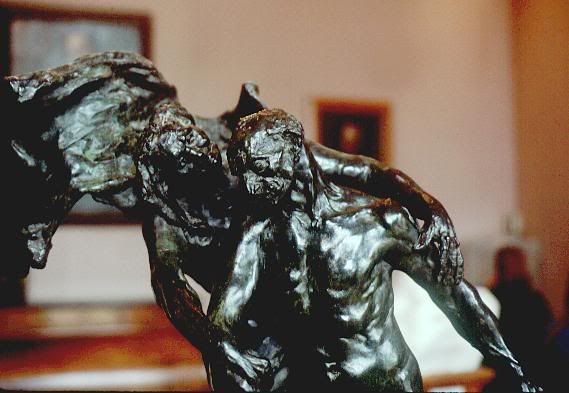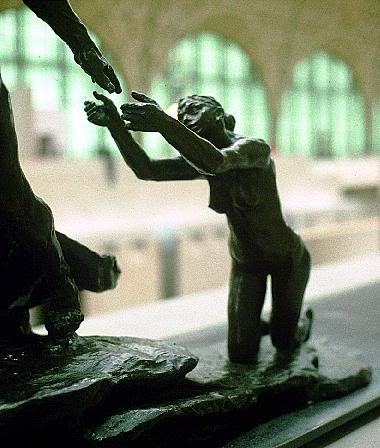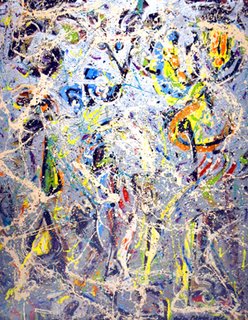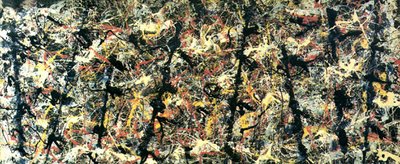Camille Claudel: Age of Maturity

The sculpture pictured here is called The Age of Maturity, by Camille Claudel. She was a student of Rodin and also his lover. I discovered this work in the Musee' D'Orsay in Paris. I was stunned. Sometimes a work of art can stop you in your tracks, take hold of your heart, your imagination, and your humanity, and reveal something deep and real about our human condition. This piece did it for me.

There are three figures here. An old man, and old woman, and a young woman. The old man is moving forward but he is trying to reach backwards towards the young woman, who is reaching out to him. The old woman has her arm draped around the old man offering a comforting strength and guiding him forward. His expression is one of agony. He wants to stay, he wants what is behind him. The old woman's expreassion is one of understanding, even pity, but also strength and resignation. The young woman reaches out to the old man with a true longing. Her expreassion is one of begging, pleading, and need.
Life goes in only one direction...towards the future. There comes a time when we have to let go of our past. Put away the desperate desires of youth. Maturity is about facing that time with dignity. Letting go of youth and accepting mortality. Coming to terms with ageing and dying.
Does the young woman represent all that was wonderfull and desireable in the old man's past. Is this why he is reluctant to leave her behind? Is this sculpture a symbol of every mid-life crisis?
Claudel was Rodin's lover and student. But he refused to leave his long term love, Rose, in favour of her. She realised that she would never be Rodin's wife. Is this sculpture just Camille on her knees begging Rodin to stay with her and leave Rose? Perhaps. Perhaps it is that...and more. But I know what it meant to me.
I had just turned 50 when I first saw this piece. I had also been recently diagnosed with leukaemia. Maturity touched me very deeply. It is now, and will remain, one of my favourite works of art.



